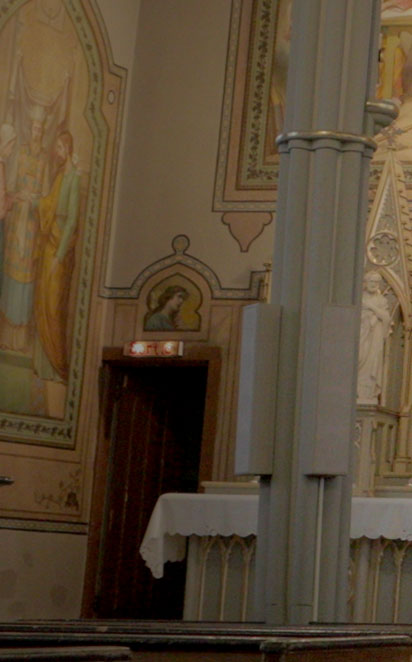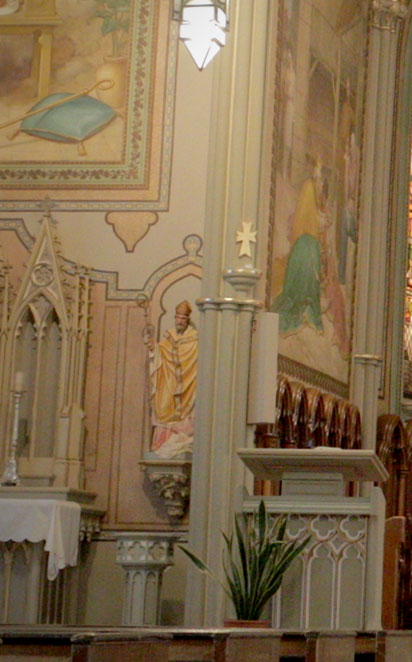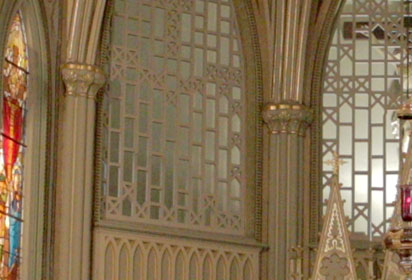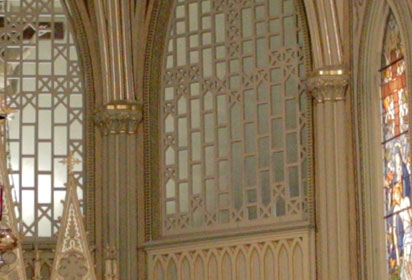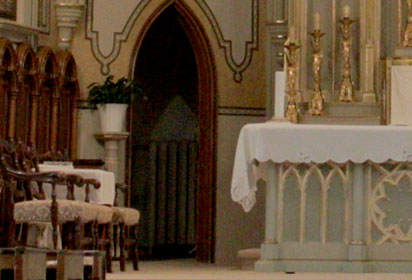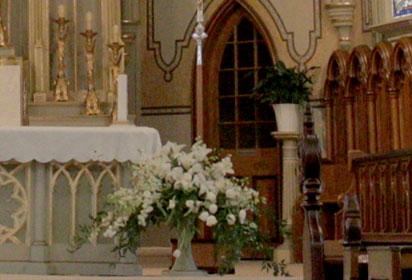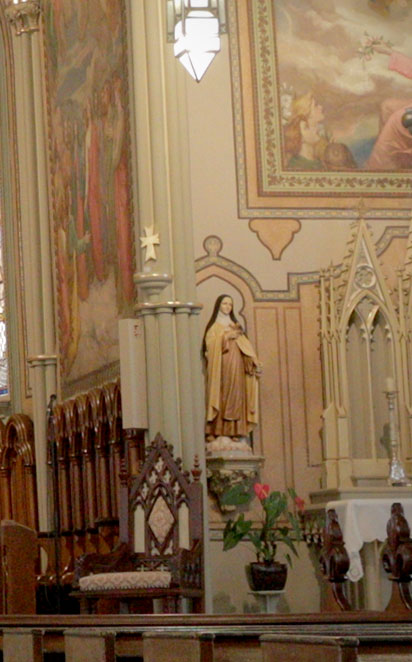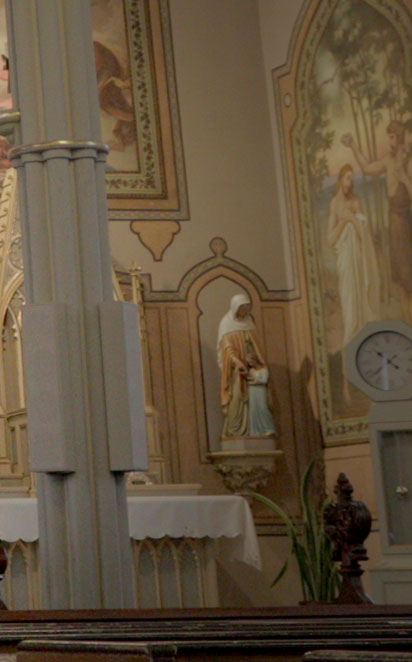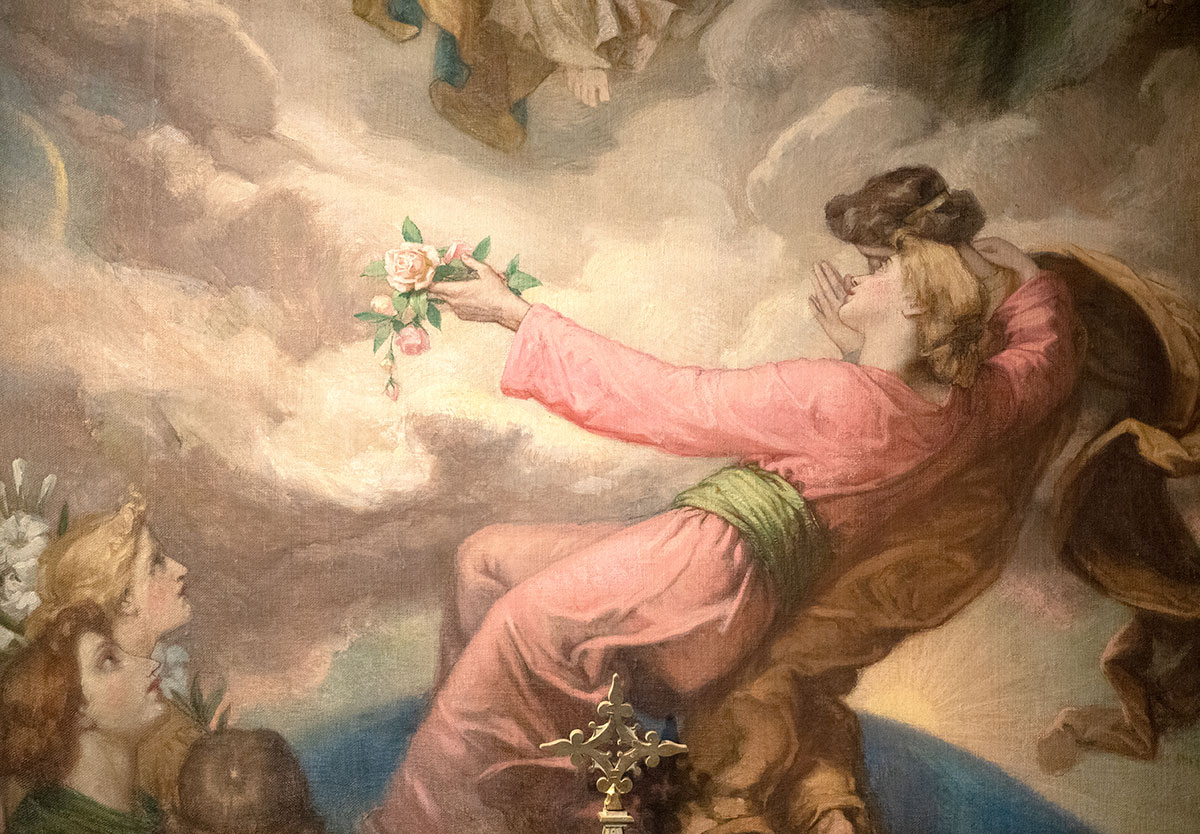Saint-Hilaire Church
Construction of the Saint-Hilaire church begins in 1830. Despite several difficulties, it is completed in 1837. Today, the appearance of the church is almost identical to that of the original architecture, with the exception of the neo-Gothic-inspired bell tower which replaced the previous one in 1874.
The complete decoration of the church is attributed to Ozias Leduc. The project begins in 1896 when the priest Joseph-Magloire Laflamme hires the artist. Leduc not only becomes decorator, but also general contractor, supervising the project until its completion in 1900. This is Leduc's first decorative collection made up of original compositions through which he introduces the seven sacraments, a new iconographic theme for the province of Quebec.
Created from 1896 to 1900, the set of fifteen canvases and ornamentations painted on the walls and vaults of the church represent fundamental themes of Christianity as well as the practice of Christian life: the Stations of the Cross, the four evangelists, the adoration of the Magi, the ascension of Christ, the assumption of the Blessed Virgin, the seven sacraments, as well as the patron of the parish, Saint-Hilaire de Poitiers. Two groups of worshiping angels and a set of stained glass windows complete the decoration of the choir.
The marouflage technique adopted for the wall decoration of the Church of Saint-Hilaire is basically the same he used throughout his career. Inspired by Puvis de Chavannes, a French artist who pioneered the symbolist movement that Leduc so admired, marouflage consists of affixing a painted canvas on a wall. This technique allows Leduc to work in the comfort of his studio.
The choice of a soft and harmonious color palette gives an overall unity to the decoration. Shades of green and brown on the walls serve as a backdrop for paintings with more varied and deep colors. Leduc follows basic rules of mural painting by highlighting the neo-Gothic architecture of the church itself.
Lines and borders give the walls a two-dimensional feel, suggested by a mosaic background. Plant motifs displayed around the paintings (vine leaves, bindweed) refer to the symbolic characteristics of the sacraments.
One can see in the sinuous flow of the Virgin of the Assumption's clothes an influence of Art Nouveau. This movement greatly impressed Leduc during his trip to Paris in 1897, while planning the Saint-Hilaire church commission.
The importance of Leduc’s work is such that the church was recognized as historic monument in 1965 and the paintings cultural heritage in 1976.
In this world, the bright light transfigures more than the light of reality. Through mysterious shadows, a total revelation appears where nothing is worrisome and everything is serene. - Ozias Leduc
Guided tour
Saint-Hilaire Church
Download in WebM format (16,1 Mb)
Download in MP4 format (24 Mb)



